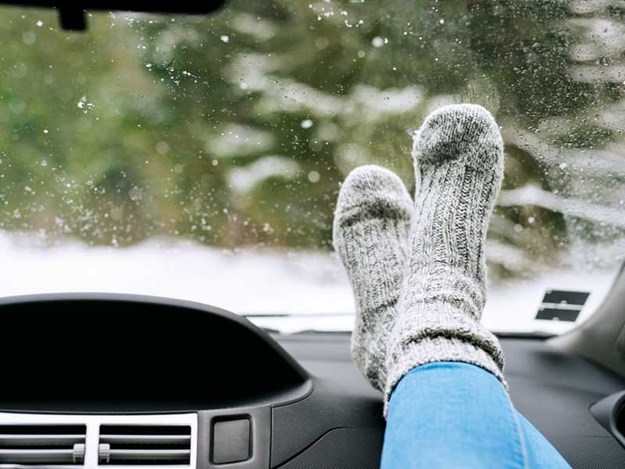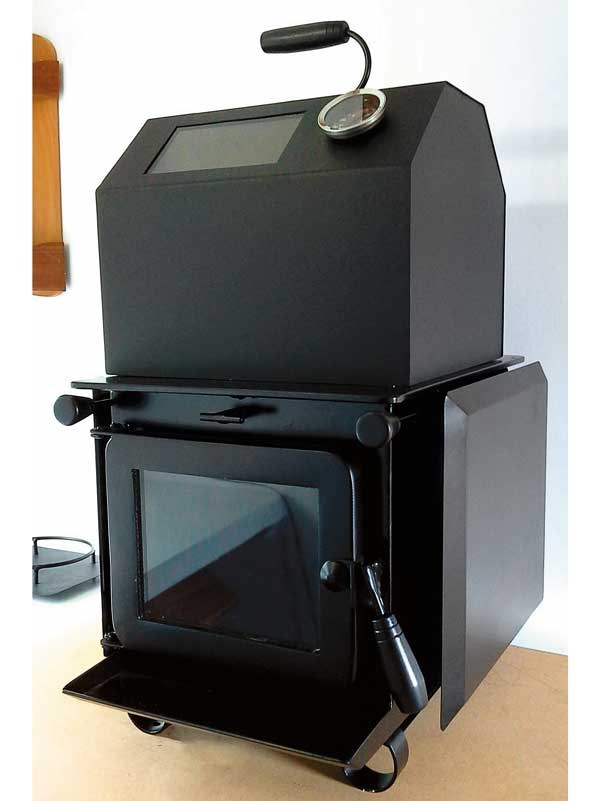On a recent trip through the Manawatu I freedom-camped alongside a house truck. The owner invited me aboard to have a look and I was immediately impressed by how warm it was inside.

“My ‘Little Honey’ keeps me warm,” said the proud owner as he introduced me to the wood-burner stove tucked into a corner of the lounge. Designed over 25 years ago with house trucks, RVs and boats in mind, the ‘Little Honey’ had to tick a number of boxes; to be small and light, have a cooktop and a glass window in the door, burn through the night unattended, be quick to shut down when it was time to move on, and safe to use in a confined space.
It does all of those things and more, but it’s not for everyone. For a start, to function correctly the exhaust flue needs to extend well above the roofline. It is a shame, because it is one of life’s pleasures to warm your nether regions in front of a fire’s flickering flames.
Thankfully there are other ways to keep warm. Before your heaters are turned on, look at ways to retain warmth inside your RV. Check the rubber seals on all doors and windows and replace those that have deteriorated.
Identify draughts and cold spots inside your RV and eliminate them. If you have a three-way fridge, check to see if cold air is entering your RV around the sides of the fridge.
If it is, block it off because it is likely to be allowing the fridge exhaust gases into the interior as well as cold air. Masking tape and duct tape are very useful temporary remedies for eliminating drafts.
If your RV is a motorhome, fitting covers for the cab windows is a great idea. They are available tailor-made to fit the popular European base vehicles; Fiat, Ford, VW and Mercedes.
Windows in later model RVs are usually double-glazed so dropping the blinds and drawing the curtains – if you have them – is usually sufficient. Insulating single-glazed windows definitely reduces heat loss so fitting them with heavy-duty drapes or insulated window covers is worth the effort.
Carpets help insulate the floor of your RV, and if the floor is not insulated an extra layer or two of underlay retrofitted can make it better still. If you connect regularly to mains power, consider fitting electric under-floor heating in the lounge and bedroom.
It is relatively inexpensive to install and run 24/7, and is a magic way to keep your RV toasty warm. Being connected to mains power means electric blankets and ceramic heaters (try before you buy because some have noisy fans) come into play.
Both are efficient ways to stay warm. You can run an electric blanket on an RV house battery through a pure sine wave inverter. (Modified sine wave inverters can wreck electric blanket control systems).
Check with an electrician familiar with house battery capacity/inverters to be sure your setup is robust enough to cope. If the floor of your RV is not insulated you could consider having a skirt made to fit right around your vehicle.
Like the skirt caravanners use to close off the draught under the caravan, a full skirt stops wind taking the heat out of your RV as it blows through underneath. Popular in America, skirts are made from vinyl fabric, sheets of plywood or Styrofoam boards.
They are best suited to long-term stays rather than touring. If you’re considering fitting a new heater in your RV keep in mind that diesel heaters need a continuous stable power source to run their electronics while operating.
But unlike LPG heaters, they don’t need a suitably qualified person to install them. If you are DIY confident you can do it yourself. Note that reverse cycle air-conditioners/heaters do not heat satisfactorily once the outside temperature drops below 6°C.
And on a final note, the ‘Little Honey’ wood-burner man is very busy. He’s out of stock and not accepting more orders until September, so get your orders in if you want to keep you warm next winter.
 |
The Little Honey wood-burner with the separate oven (extra) on top |





